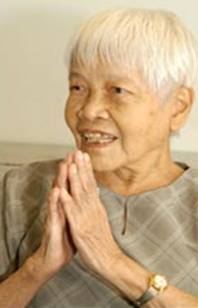|
|
New Criteria, Subsidy Cut for Nursing Homes
By Vivi Zainol, The Straits Times
Singapore
June 14, 2004

FEWER old people could be left to languish in nursing homes run by voluntary welfare organisations (VWOs), as the Health Ministry (MOH) is reviewing the admission criteria and subsidy framework for these homes.
The review comes barely four years after means testing was introduced for nursing homes in 2000 to make sure those patients who needed financial support would get it.
The Straits Times understands that the criteria will be made more stringent so that only patients who truly need round-the-clock care will be admitted.
To boost the use of day rehabilitation services as an alternative for those who do not need constant care, MOH is also working with VWOs to improve transportation, opening hours and publicity efforts, it said.
But a recent subsidy cut for all step-down services has left day rehabilitation centres wondering if taking in more patients simply means a heavier financial burden of having to raise more money.
In April, the ministry reduced the norm cost - what it estimates to be a reasonable cost of providing the service - for step-down care, by 5 per cent.
Step-down care includes nursing homes, community hospitals, hospices and day rehabilitation, and ministry subventions are based on the norm cost.
The new norm cost for the 24 MOH-funded day rehabilitation centres is now $38.40, said the ministry.
Nursing homes contacted said they had not been told the new numbers, but used to receive subventions based on charges to patients of $15.20 to $37.80 per day.
Patients may not notice the difference to their pockets - the result of a ministry-wide Budget cut - because the VWOs which run these services customarily raise their own funds to support patients and programmes.
'We'll work harder to raise funds, as we don't want to compromise on quality,' said Madam Azizah Mustafa, the manager of Muhammadiyah Health and Day Care for Senior Citizens.
The centre, which sees 85 patients, estimates it will need to raise $14,000 on top of the $280,000 it raises every year now to meet its yearly expenses of $400,000.
The ministry did not reveal how much the cuts would save, but it subsidises step-down services by 25 to 75 per cent after assessing how much each patient can afford to pay.
Part of the subsidies is drawn from interest earned on the ElderCare Fund, set up in 2000 for just this purpose. The fund, which now has $1 billion, will have enough to support all subsidies by 2010.
MOH said that even now, 'most VWOs can break even and accumulate operating surpluses' to cope with unexpected emergencies such as Sars.
But VWOs say the competition for the charity dollar makes raising funds tough.
Most support low-income families, who either default on payments or pay only part of the subsidised fee.
Six nursing homes contacted estimated they would need $100,000 to $300,000 more each year because of the cuts.
One of the six said it may make patients pay more. The rest said they were likely to trim staff bonuses and cut back on the hiring of specialists or trained staff.
Mrs Vijaya Sreenidhi, chief executive officer of the Sree Narayana Home for the Aged Sick, said her home, which ran a deficit of $450,000 last year, would be 'very badly affected'.
But there are others who are taking it in their stride.
Said Dr Stephanie Chee, the manager of Geylang and Toa Payoh Senior Citizens' Health Care Centres: 'If we continued to rely on the Government, we shouldn't call ourselves VWOs.'
|
|



